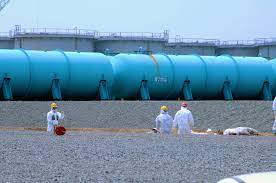IAEA Launches University Lecture Series on Radiation Safety in Fukushima
More than a decade has passed since the magnitude 9.0 earthquake and tsunami triggered the accident at the Tokyo Electric Power Company’s (TEPCO) Fukushima Daiichi Nuclear Power Station.

In a meaningful stride toward recovery and education, the International Atomic Energy Agency (IAEA) has delivered its inaugural set of university lectures on radiation safety in Fukushima Prefecture, Japan. This initiative is designed to strengthen local knowledge and foster leadership in environmental recovery, following the devastating 2011 Fukushima Daiichi nuclear accident.
The lecture series represents the first educational step under a long-term cooperation agreement between the Government of Japan and the IAEA, which began in 2012 and will run until 2027. Implemented at the request of Japan’s Ministry of Foreign Affairs, this pilot program aims to empower university students with the technical skills and understanding needed to lead the next chapter of Fukushima's transformation.
Reviving Fukushima: A Decade of Progress
More than a decade has passed since the magnitude 9.0 earthquake and tsunami triggered the accident at the Tokyo Electric Power Company’s (TEPCO) Fukushima Daiichi Nuclear Power Station. The disaster led to widespread evacuations, long-term environmental damage, and public concern over radiation safety.
Today, however, Fukushima Prefecture tells a story of steady recovery and resilience. Thanks to extensive decontamination work, radiation monitoring, and natural decay, much of the once-restricted area is now habitable. Playgrounds are once again filled with children, homes have been rebuilt, and the forests welcome hikers. Despite the progress, remediation and radioactive waste management remain key focuses of ongoing efforts.
IAEA’s Educational Initiative: A Vision for the Future
Led by Miroslav Pinak, Head of the IAEA Radiation and Monitoring Section, the lectures were developed in alignment with the IAEA Safety Standards. The course content covered core topics such as:
-
Basic Radiation Principles: Understanding ionizing radiation and its effects.
-
Radiation Monitoring Techniques: Using instruments to measure radiation in various environmental contexts.
-
Environmental Remediation and Decontamination: Strategies and methods used to reduce radiation in affected areas.
-
Radioactive Waste Management: Safe handling, storage, and disposal of contaminated materials.
Students participated in workshops where they engaged in hands-on learning, using real equipment to detect and measure radiation in soil and mineral samples. The goal is not only to raise awareness but to develop a technically capable cohort of future scientists, environmental managers, and community leaders.
Local and International Support
Hiroshi Aoki, former Director General of the Fukushima Prefectural Centre for Environmental Creation, voiced optimism about the program’s impact: “I would expect that the IAEA lectures will motivate Fukushima Prefecture university students to learn more about environmental radiation and the current state of environmental remediation in the prefecture.”
Kenichiro Tanaka, Director of the International Nuclear Cooperation Division at Japan’s Ministry of Foreign Affairs, emphasized the program’s broader significance: “We hope the younger generation will learn from the collective knowledge and experience of the IAEA and apply this to the next steps for reconstruction and revitalization in Fukushima Prefecture, which would also contribute to international nuclear safety.”
Student Reflections and Future Expansion
For students like Hiroki Furuchi from Higashi Nippon International University, the lectures were not only informative but empowering: “After the lectures I hope to be able to share accurate information about radiation with those around me, when the topic comes up on television or other media.”
The IAEA will collect feedback from participants and use it to refine the curriculum for future iterations. The program is set to return in 2025, expanding to include more universities and students across Fukushima Prefecture.
Global Implications and Lessons Learned
This educational initiative demonstrates how international collaboration can play a pivotal role in post-disaster recovery. Beyond Fukushima, it sets a model for how science-based education and transparent communication can help rebuild trust, promote safety, and enable affected communities to take charge of their future.
As Fukushima continues its journey from crisis to revitalization, the IAEA’s partnership with Japan represents a commitment to knowledge-sharing, resilience, and hope — a testament to what is possible when science and solidarity come together in the wake of adversity.










